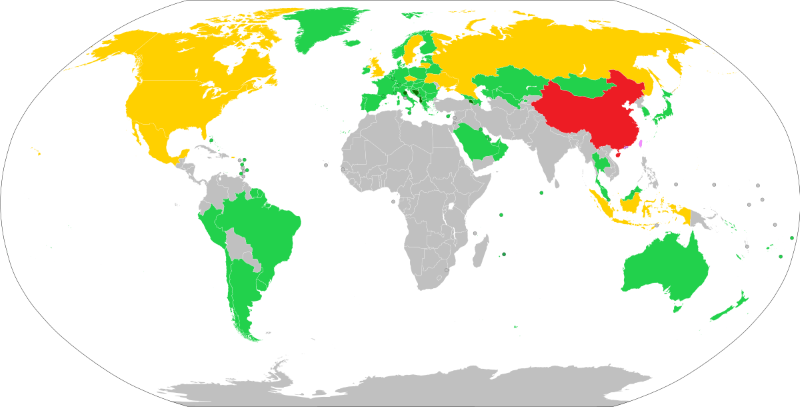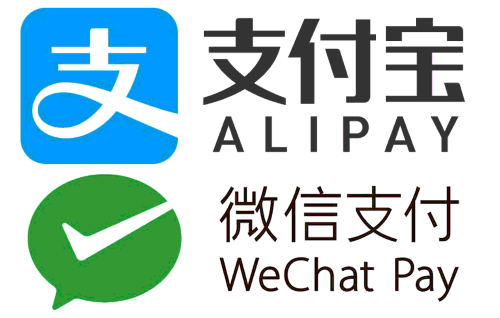After years of strict visa rules, China has finally started opening up to international visitors. Since around 2023, the government has been actively easing entry requirements and encouraging tourism. Still, for many people, the idea of visiting China comes with a lot of uncertainty: it’s a country that’s culturally, politically, and practically very different from most others.
As someone born in China but now based in Europe for over 15 years, I’d like to share some practical tips to help you plan a smooth and enjoyable trip.
[Visa]
Not long ago, China had one of the toughest visa policies in the world, offering 15-day visa-free access to just three countries: Japan, Singapore, and Brunei. Everyone else had to apply for a visa in advance, which killed the idea of visiting the country for many people in the first place.
That’s changed quite a bit in the last three years. The visa-free list has now grown to include South Korea, Thailand, Malaysia, much of Europe and South America, and more. A few countries with recent diplomatic tensions – such as the US, UK, Sweden, Czech Republic, and Lithuania – are still excluded, but that could change. I was honestly surprised to see how “warmly” Australians are now being welcomed.
If you’re from one of the excluded countries, there’s still the Transit Without Visa (TWOV) program. If you’re flying into China from one country and out to another, you can stay for up to 10 days without a visa in many cities.
Still need a tourist visa? From the UK at least, the process is easy and fast. British passport holders applying from the UK currently receive a two-year multiple-entry visa by default.
[Payment]
If there’s one part of your trip that needs advance planning, it’s payments. China is nearly cashless and cardless – neither are widely accepted.
You can use cards in some places like major hotels, shopping malls, and Starbucks. Interestingly, American Express works more reliably than Visa or Mastercard because it’s authorised to settle payments locally.
But for everyday spending – from metro rides to street snacks – you’ll need WeChat Pay or Alipay. Download one of the two payment wallets before arriving in China. They’re used everywhere and I mean it. You’ll either scan or present a QR code, with no traditional card terminals involved.
I personally prefer WeChat Pay. Both WeChat and Alipay are powerful super-apps that do everything from payments and messaging to food delivery and ride-hailing. But WeChat has a cleaner design and more importantly no annoying pop-ups or push notifications.
Good news: both apps now support linking international bank cards, including Visa, Mastercard and American Express. Just note the following fee structure:
- Purchases under ¥200: No fee
- Purchases of ¥200 or more: 3% fee
For example, a ¥200 transaction will incur an extra ¥6. That fee applies equally to both WeChat Pay and Alipay. However, many other apps (like 12306 and Ctrip) don’t charge extra if you pay by card directly, if they support direct card payment of course.
[Internet]
You’ve probably heard of China’s Great Firewall (GFW), which blocks access to websites like Google, Facebook, Instagram, and many foreign websites. A few years ago, staying at a five-star hotel might’ve helped as many of them used to offer unrestricted internet. But that’s no longer the case, so you’ll need your own solutions.
I rely on both a VPN and mobile roaming. A few friends suggested LetsVPN to me which I used during my recent three-week trip and it worked smoothly on both my laptop and phone, though it’s limited to two devices per account.
I believe it is one of the best VPNs out there, at least for the purpose of travelling to China. If you sign up using my referral link you will get a 3-day free trial.
As for mobile data, a foreign SIM card will often bypass the firewall automatically. Lebara used to include free China roaming until very recently. Now, your best bets are CMLink and CTExcel – both are Chinese state-owned telecom companies with PAYG roaming plans (e.g. £18 for 50GB over 90 days).
For shorter stays, consider an eSIM. There are dozens of providers and I use Airalo, which is easy and works well. Feel free to use my referral code KAI2510 for a discount on your first order. They also offer a 15% off discount code that works on all orders.
[Navigation & Transport]
Google Maps doesn’t work in China – not because of the GFW, but because Google doesn’t have the mapping rights there.
My go-to navigation app is Gaode. It’s reliable and detailed enough for most travellers. If you’re an iPhone user, Apple Maps will also work; it actually runs on Gaode’s backend in China.
Now let’s talk trains. China’s high-speed rail network is phenomenal and please check out my reviews below:
- My review of China’s high speed train, business studio
- Onboard China’s high speed train in Business Class
- Onboard China’s high speed train in First Class
Unless you’re covering very long distances, the train will usually be better than flying. Domestic flights can be expensive and prone to delays, and there aren’t really any true low-cost airlines like in Europe.
You can book train tickets via 12306 (the official channel) or many other travel agencies like cTrip or Alibaba’s Fliggy platform. I recommend 12306 as it’s easier for managing bookings, plus there’s no additional fee when paying with a foreign bank card.
Public transport in major cities is excellent (but can be crowded as well), especially the metro systems. Cities like Beijing and Shanghai have extensive networks that are clean, efficient, and cheap to use. Both cities recently introduced tap-in/tap-out systems with contactless card payments; in other cities however, you’ll still need to scan a QR code or buy a paper ticket at the station.
That said, taxis are quite affordable, especially if you’re travelling as a group of three or four. Instead of flagging one down on the street, it’s best to use Didi, China’s equivalent of Uber. It’s fully integrated into both WeChat and Alipay, so you won’t need a separate app.
[Accommodation]
When I travel in China, I usually stay at international hotel chains. Prices are low, and quality can be far superior to what you’d get in Europe or the US for twice the amount (if not more). Here are some of my recent hotel reviews:
- My review of Crowne Plaza Suzhou East Taihu
- My review of InterContinental Shanghai Wonderland
- My review of Crowne Plaza Shanghai Hongqiao
In cities like Beijing or Shanghai, you can get a very good four-star hotel for £80, and luxury five-star properties for around £120. Prices drop even further in smaller cities.
If you want to try local brands, here are a few trusted names:
- 如家 Home Inns
- 七天 Seven Days Inn
- 汉庭 Hanting
- 锦江 Jinjiang
You can book through:
- Trip.com
- cTrip
- Meituan
- Fliggy
Personally I think Trip.com is the most user friendly. It’s basically an international spinoff of cTrip, targeting the overseas market so with the best multi-language and payment support.
Important tip: stick with bigger hotel chains if you can, whether Chinese or international. Chinese law requires hotels to register foreign guests’ information, which is usually done electronically without a problem at the well-established hotels. Small properties sometimes can’t process it easily and will just refuse your stay.
Travel to China is becoming more accessible, but it’s still unfamiliar territory for many. From payments to internet access, there are definitely some things you need to prepare for. I hope this guide helps you feel more confident about visiting, and feel free to leave a comment if you have any question.













Thanks for the CTExcel esim option, i’ve been using CMLink for my travels and its very convenient and cost effective compared to physical prepaid SIMs.
Yes CMlink is good. Was better before they started to limit roaming usage on their regular plans.
This is brilliant, thank you. Travelling to Shanghai in a few months and this will be very helpful.
Glad it helps